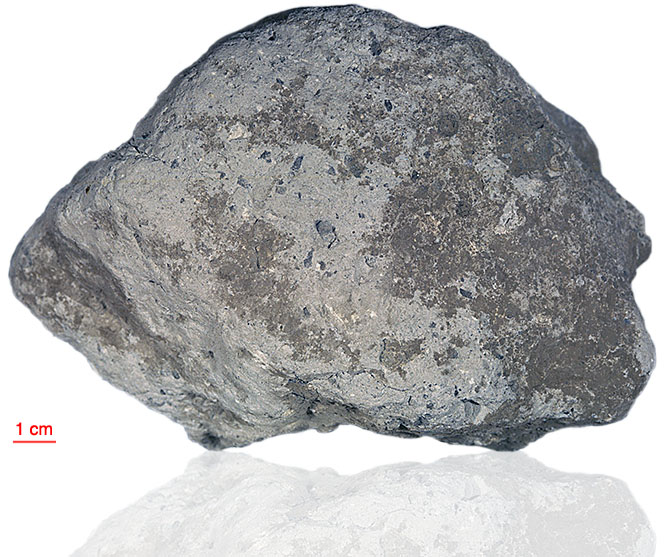
Fact sheet
60016 is a fragmental polymict breccia and is regarded as an “ancient” regolith breccia, presumably formed during the period of basin formation. It has a light grey matrix with both light and dark clasts. It is friable with a porous clastic matrix with seriate grain size from several mm downwards. It contains lithic clasts including cataclastic and recrystallized anorthosite, coarse-and fine-grained poikilitic impact melt, granoblastic material, noritic anorthosite, dark matrix breccias, and several types of glass fragments in various stages of devitrification. Nearly all the dark matrix clasts are aphanitic melts. Our thin section appears to have sampled part of a shocked and polygonised anorthosite clast.
The sample weighed 4307 grams before analysis. Two clasts and have been dated at ~3.8 billion years (Ar/Ar).
Further details of this and other Apollo samples are here: http://curator.jsc.nasa.gov/lunar/
The Apollo 16 landing site was in the hilly region around Descartes crater in the lunar highlands. The landing spot was chosen to allow the astronauts to gather geologically older lunar material (Descartes Formation and the Cayley Formation) than the samples obtained in the first four landings, which were in or near lunar maria.
The mission lasted 11.1 days, with a stay on the lunar surface of 71 hours. The crew were on the lunar surface for 20.2 hours during which they traversed approximately 27 kilometers and collected approximately 96 kilograms of samples.
Apollo 16 was launched on 16 April 1972.






